Beyond Time and Space: Minoru Nomata's Solo Exhibition Opens at the Tokyo Opera City Art Gallery
Minoru Nomata “Alternative Sights-2” 2010, acrylic on canvas, 120.3 × 162.1 cm, artist collection, Photo: Alena Heiß
Minoru Nomata was born in 1955 in Meguro-ku, Tokyo. He studied formative design at the Tokyo University of the Arts and, after graduating, worked as an art director at McCann Erickson Hakuhodo. He continued to paint in his spare time, and in 1986, Nomata received the opportunity to hold his first solo exhibition at Sagacho Exhibit Space, an alternative space created by Kazuko Koike that operated from 1983 to 2000. Since then, he has concentrated on his work as a painter, held several solo exhibitions in Japan and abroad, and attracted the attention of enthusiastic fans.

Continuum is Nomata’s second exhibition at the Tokyo Opera City Art Gallery and the first solo exhibition to be held in the Special Exhibition Hall. It can be said that his previous show, Architecture on Canvas (2004), organized in conjunction with an exhibition by Wolfgang Tillmans, became a launching pad for his career. This is where the current director of the renowned British gallery White Cube met Nomata for the first time. In 2020, he was invited to present an online exhibition, Introductions: Minoru Nomata, at White Cube and join the gallery’s roster of artists. Previously known only to “those who know,” Nomata was instantly placed on the world stage.
The donor of the museum’s collection, Kotaro Terada, greatly admires Nomata’s works and has been collecting his paintings since the 1980s. With over 40 representative works, the Tokyo Opera City Art Gallery’s collection is the largest of its kind in the world. This retrospective exhibition is a unique opportunity to retrace the steps of Nomata’s work from the very beginning of his career.
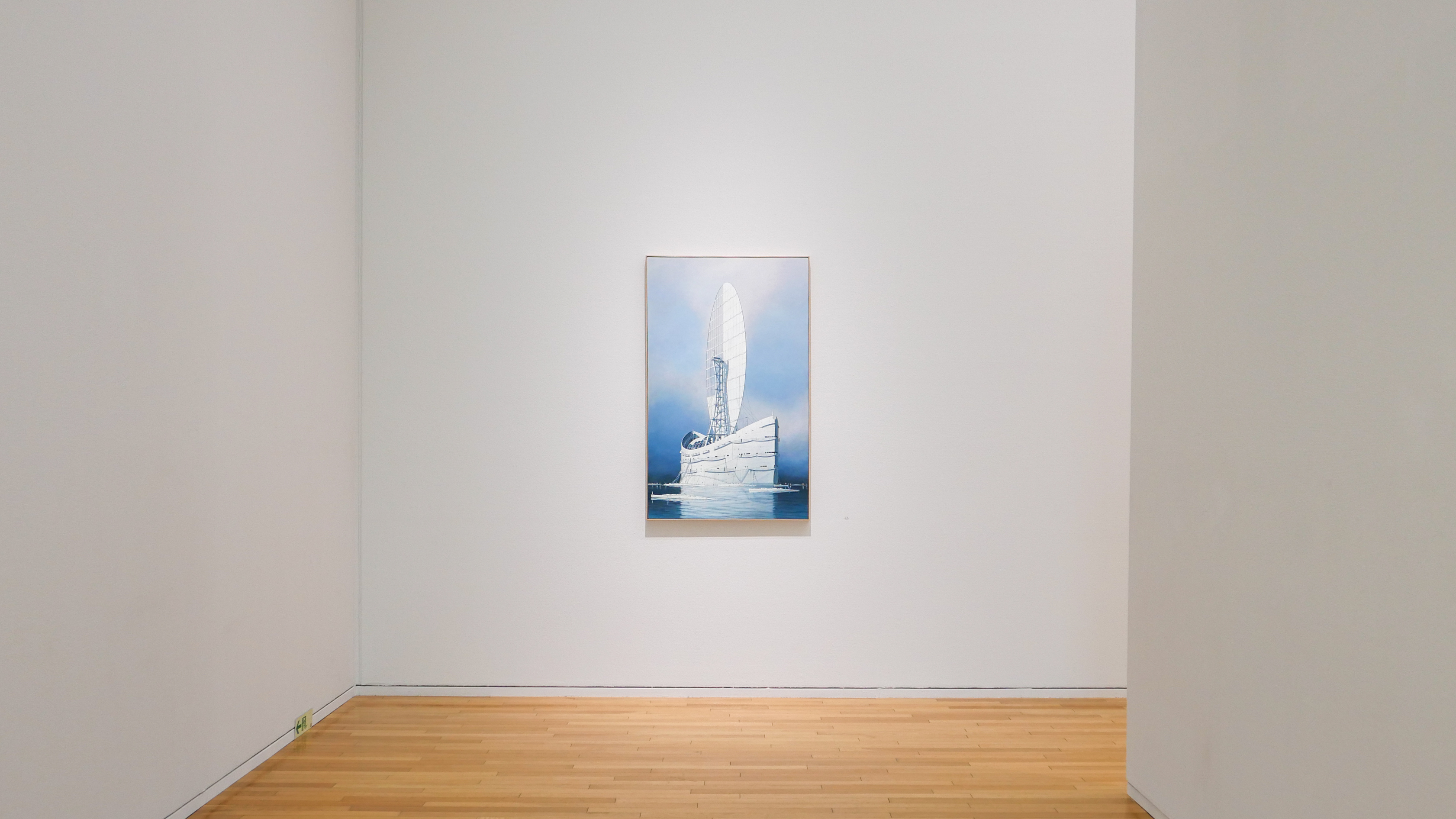
There is an eeriness to Minoru Monata's acrylic paintings - they are incredibly detailed and yet appear somehow empty. Mysterious structures look like they were built by humans or perhaps non-human civilizations, but it is impossible to determine any time frame or state of the world. Have the structures been abandoned, or were they meant to stand independently and face the passage of time? The minimalist concept of the Tokyo Opera City Art Gallery only adds to the mystery - we only see numbers beside the paintings but never the year or description.
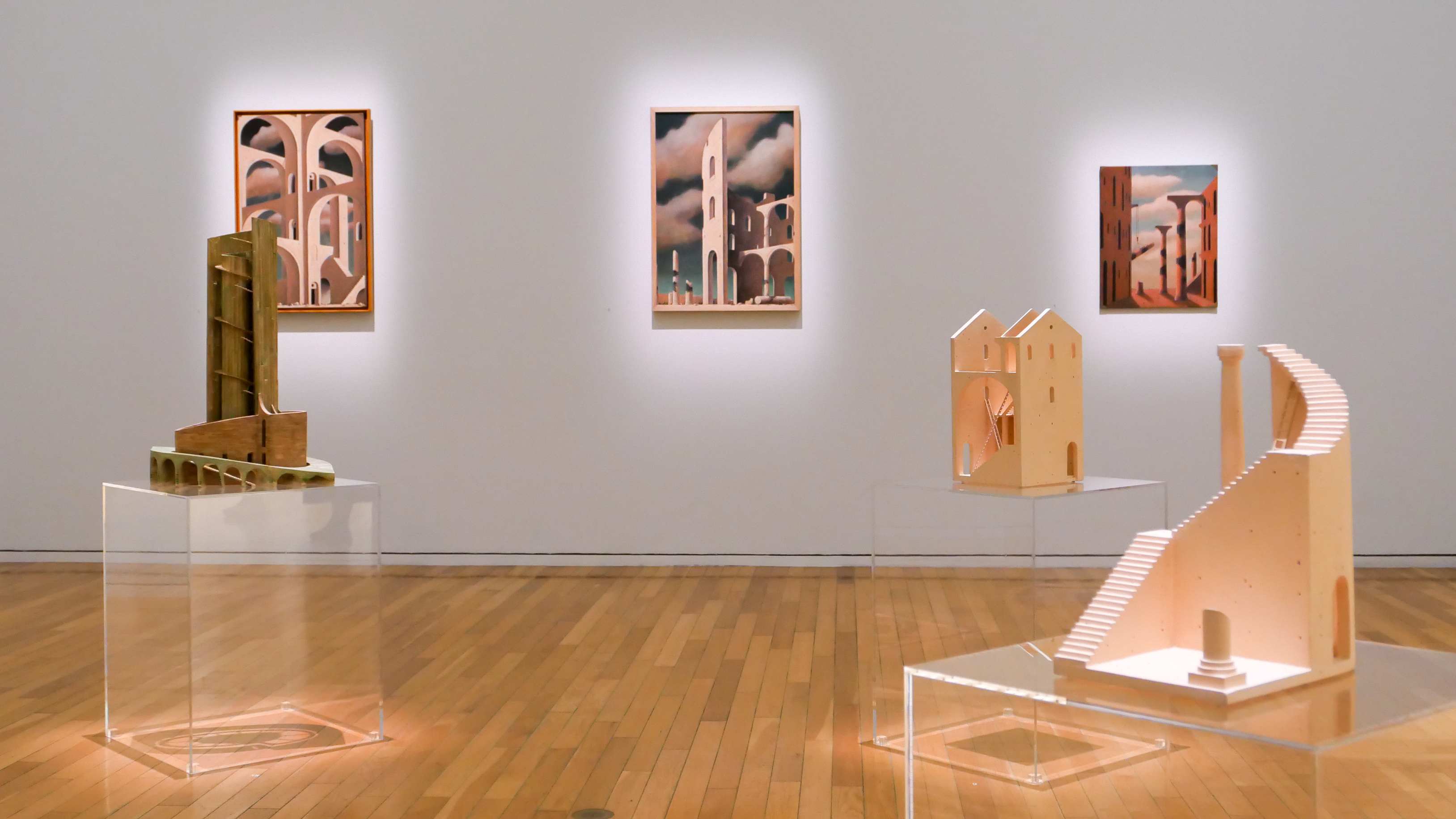
Nomata held his first solo exhibition STILL at Sagacho Exhibit Space in 1986. Shortly after finishing his studies at the Department of Design at the Tokyo University of the Arts, he painted mysterious structures reminiscent of traditional architecture. Enigmatic structures seem to belong to the past or perhaps the future - it is difficult to determine whether they are in the process of being built or are on the verge of decay. Alongside the paintings, the exhibition features 3D architectural models. At a closer look, we can notice that they do not comply with the rules or architecture. Staircases lead nowhere, and the buildings seem to be uninhabitable.

In the 1990s, the structures depicted by Nomata grew larger, and he began introducing natural elements into his work. The buildings are surrounded by nature or stand in the middle of the woods, sometimes containing greenery within. Such harmony between nature and humankind feels unrealistic, yet it is somewhat nostalgic and romantic. Perhaps because it evokes visions of the distant past when our ancestors lived in balance with nature. Notably, although Nomata's paintings appear highly realistic, the details are quite vague upon closer observation.


The largest and most spacious exhibition room features Nomata's paintings from the late 1990s and early 2000s. The room is filled with atmospheric and aerial elements such as ships, windmills, and balloons. The depiction of the sky is more extensive and precise, and the structures now seem to have some purpose, though it remains unclear who built them and when. The antagonism between nature and humanity is one of Nomata's primary interests, and Babel 2005 (2005), a piece inspired by urban development, symbolizes his approach to the subject of human ambitions.
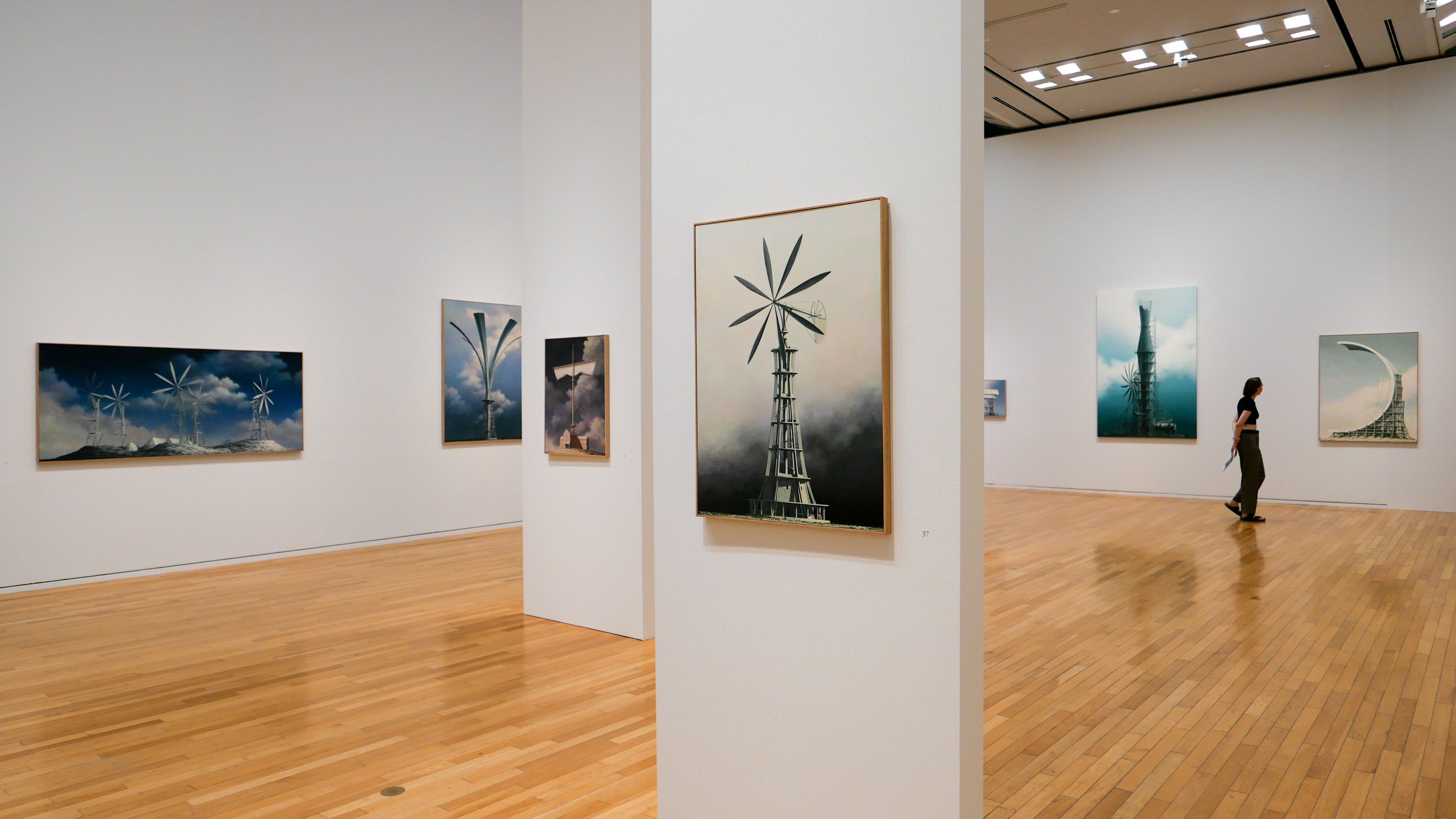

In contrast to the bright and airy works that preceded it, the Skyglow series is one of the most radical of Nomata's works regarding composition and atmosphere. The exhibition space and paintings are shrouded in darkness, and the contemporary structures and cities glow within it.
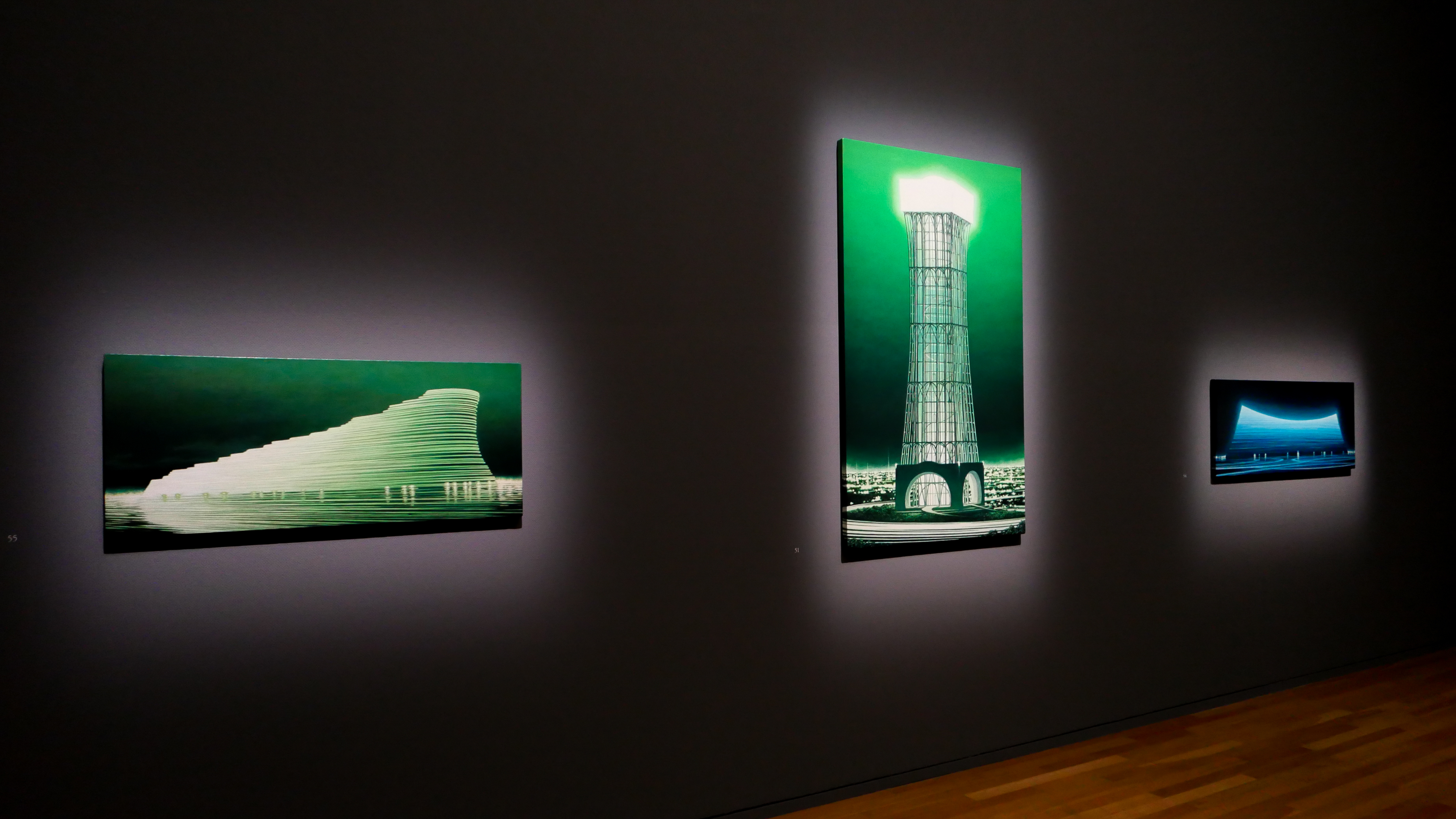
The Great East Japan Earthquake of 2011 had a tremendous impact on many Japanese artists, including Nomata. Seeing the structures he had repeatedly painted destroyed by overwhelming natural forces, Nomata was temporarily unable to face the canvas. It was during this time that he created the series Square Drawing (2011-15). In these small paintings, Nomata depicted the most important things to him.

Toward the end of the exhibition and in the most recent works, the perspective and scale of the paintings grow wider - we are now seeing the structures from a distance and above. It is also sometimes possible to identify the place, as in Imagine-1 (2018), which depicts a view of Tokyo and Mt. Fuji in the distance.
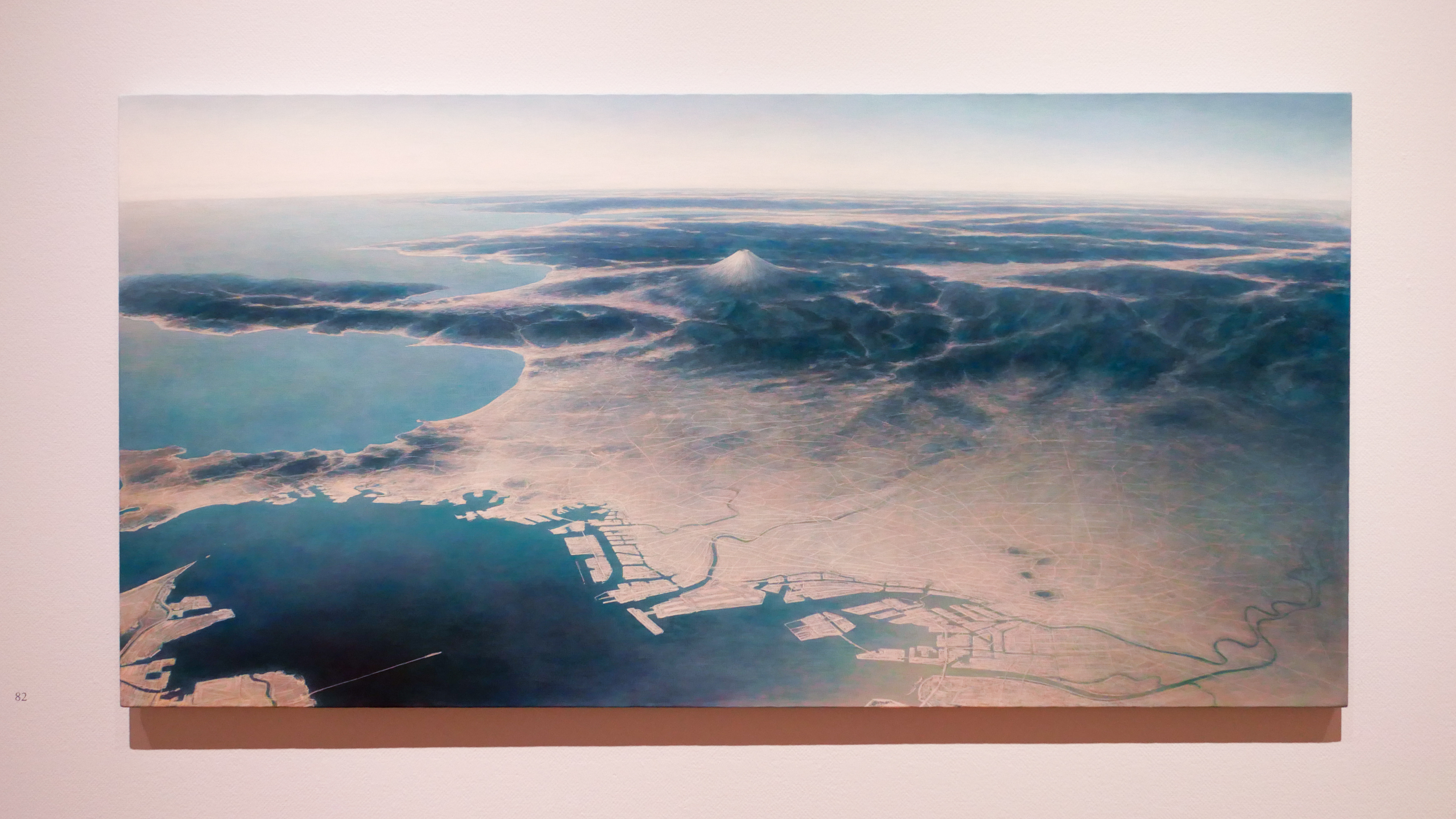
Woven together by a series of fortunate events, this retrospective exhibition illustrates the long-lasting relationship between Minoru Nomata and the Tokyo Opera City Art Gallery. To step into the world of Nomata's paintings is similar to being transported into the mysterious yet realistic world that exists beyond time and space. Located close to the Shinjuku area, this is a must-see exhibition in Tokyo this summer. Don't miss the opportunity to see the special exhibition From the Terada Collection 076 Highlights from the Terada Collection (Part 2), featuring works from Kotaro Terada's collection on the exhibition space's second floor.

Alena Haisaki
Alena Haisaki



